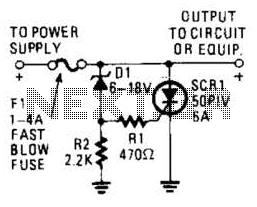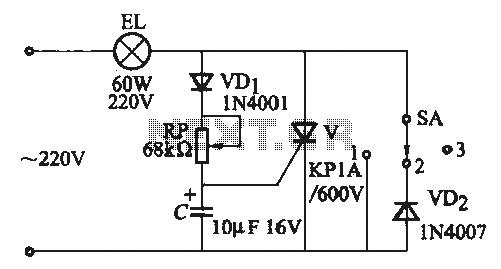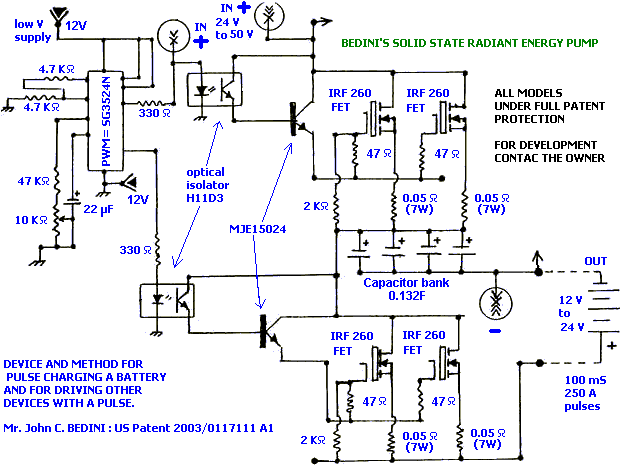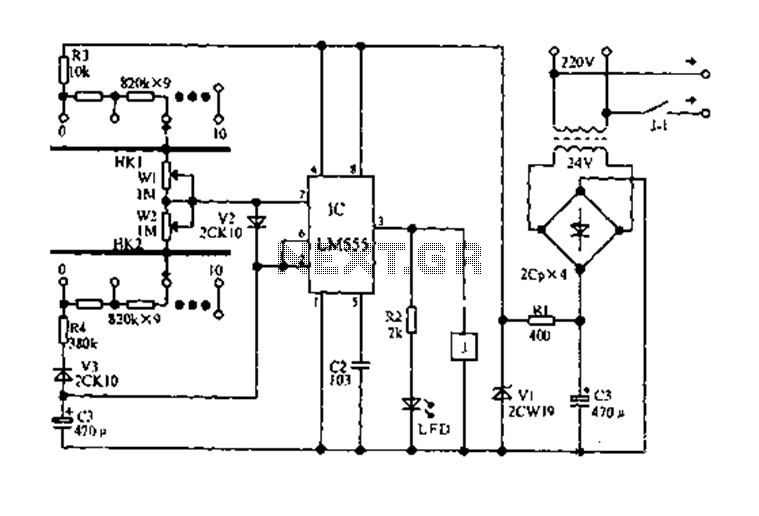
Automatic Headlight Brightness Switch circuit

Using high-beam headlights while driving on the highway can significantly enhance visibility; however, they may pose a blinding risk to other drivers. This straightforward circuit can be integrated into the headlight switch to enable automatic switching between high and low beam headlights when detecting oncoming traffic. It achieves this by sensing the headlights of approaching vehicles. Consequently, drivers can safely utilize high beams without causing glare to other motorists.
The circuit operates based on a light-sensing mechanism, typically utilizing a phototransistor or a light-dependent resistor (LDR) as the primary sensor. When an oncoming vehicle approaches, the sensor detects the increased light intensity from the vehicle's headlights. The output from the sensor is fed into a microcontroller or a comparator circuit, which processes the input signal.
Upon detecting sufficient light intensity, the microcontroller activates a relay or a transistor switch that toggles the headlight configuration from high beam to low beam. This switching mechanism is designed to be instantaneous, allowing for a seamless transition that minimizes the risk of dazzling other drivers. Once the oncoming vehicle has passed and the light intensity falls below a predetermined threshold, the system automatically reverts to high beam operation, thus optimizing visibility for the driver.
To ensure reliable operation, the circuit may include components such as resistors to limit current, capacitors for noise filtering, and diodes to prevent back EMF from damaging the circuit. Additionally, the design may incorporate a delay timer to prevent rapid switching in case of fluctuating light conditions, thereby enhancing the circuit's stability and performance.
The integration of this automatic headlight switching circuit not only improves safety on the road but also enhances the driving experience by allowing drivers to maintain optimal visibility without compromising the safety of others.Driving the highway with your high-beam headlights can really increase your visibility, but can he a blinding hazard for other drivers. This simple circuit can be wired into your headlight switch to provide automatic switching between high and low beam headlights when there is oncoming traffic.
It does this by sensing the lights of that traffic. In this way, you can drive safely with your high-beams on without blinding other drivers.. 🔗 External reference
The circuit operates based on a light-sensing mechanism, typically utilizing a phototransistor or a light-dependent resistor (LDR) as the primary sensor. When an oncoming vehicle approaches, the sensor detects the increased light intensity from the vehicle's headlights. The output from the sensor is fed into a microcontroller or a comparator circuit, which processes the input signal.
Upon detecting sufficient light intensity, the microcontroller activates a relay or a transistor switch that toggles the headlight configuration from high beam to low beam. This switching mechanism is designed to be instantaneous, allowing for a seamless transition that minimizes the risk of dazzling other drivers. Once the oncoming vehicle has passed and the light intensity falls below a predetermined threshold, the system automatically reverts to high beam operation, thus optimizing visibility for the driver.
To ensure reliable operation, the circuit may include components such as resistors to limit current, capacitors for noise filtering, and diodes to prevent back EMF from damaging the circuit. Additionally, the design may incorporate a delay timer to prevent rapid switching in case of fluctuating light conditions, thereby enhancing the circuit's stability and performance.
The integration of this automatic headlight switching circuit not only improves safety on the road but also enhances the driving experience by allowing drivers to maintain optimal visibility without compromising the safety of others.Driving the highway with your high-beam headlights can really increase your visibility, but can he a blinding hazard for other drivers. This simple circuit can be wired into your headlight switch to provide automatic switching between high and low beam headlights when there is oncoming traffic.
It does this by sensing the lights of that traffic. In this way, you can drive safely with your high-beams on without blinding other drivers.. 🔗 External reference





